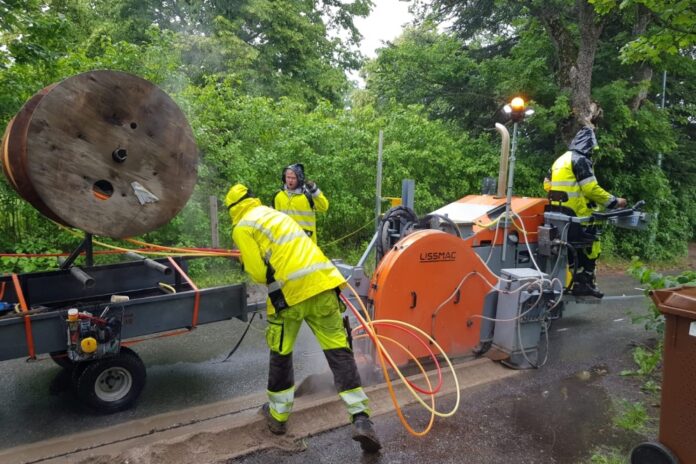The FTTH Council Europe predicts that 202 million homes will be passed by fibre by 2026, compared to 88.1 million in 2019, in 39 markets. (Picture courtesy of BT)
At the FTTH Council Europe’s annual conference, the organisation has published figure regarding the continent’s status regarding full-fibre deployment in 2020 and its expected progress by 2026.
It covers both fibre to the home and fibre to the building (FTTH/FTTB) technologies, but not fibre to the cabinet or any other part-fibre technology.
If the 202 million homes are passed by 2026, as predicted, that will equate to a penetration rate of 73.3%, compared with 43.3% in 2019.
Germany (+730%), United Kingdom (+548%) and Italy (+218%) are expected to see the biggest jump in homes passed by 2026. The figures looks impressive, but remember the low base they start from: despite being three of the four biggest economies in Europe (France is the fourth of the quartet) in last year’s figures, all three were in the bottom six in Europe for fibre penetration. They have made good progress since, as shown in the latest figures show below.
Less than three-quarters of Europeans having fibre access in six years’ time looks like one heck of a lot of people without proper connectivity, but the FTTH Council’s figures, produced by IDATE, do not take into consideration FTTC deployment or cable, which in markets including the UK, Belgium and Germany are providing many millions of households with gigabit speed links. Nor the use of technology like 5G fixed wireless access for hard to reach rural areas.
The have-nots
Still, by 2026 there will still probably be a good number of people without any of those options – a small percentage adds up to a lot across a continent. It is cold comfort if you are in even a tiny minority of the have-nots, especially as mobile coverage is likely to be poor as well and not a viable alternative.
Indeed, the Council flags that a new digital divide has appeared for remote working or home working, highlighted by the pandemic.
The Council notes that Covid-19 has changed public perception of the importance of broadband and our willingness to accept a premium price for fibre, which a key driver for the very high estimates for FTTH/B take up.
It states that additional measures by policy-makers aimed at increasing take-up are still crucial. It also urges countries to ensure that part-fibre solutions are not marketed as full fibre on the grounds this is misleading and causes considerable confusion for customers.



